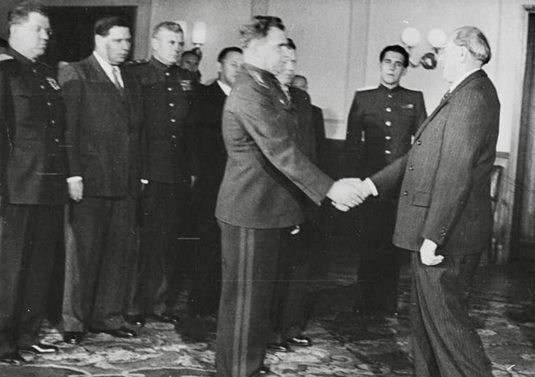A Seat at the Table of Victory
- Maria A. Kithcart

- May 10
- 2 min read

If one carefully watches archival footage from May 1945 during the signing of Germany’s unconditional surrender in Berlin, they will easily identify several key figures who played pivotal roles in the closing chapter of World War II in Europe. Among them was Colonel General Vasily Chuikov, a prominent Soviet commander best known for his leadership during the brutal Battle of Stalingrad and later the climactic Battle of Berlin. At the surrender ceremony, Chuikov was seated prominently near the signing table, underscoring his instrumental role in the Soviet capture of the German capital. Positioned directly beside him was Major General Ivan Susloparov, who had previously represented the Soviet Union at the initial German surrender signing in Reims, France, on 7 May 1945. That ceremony, conducted at Eisenhower’s Supreme Headquarters Allied Expeditionary Force (SHAEF), included senior Allied representatives such as General Dwight D. Eisenhower’s chief of staff, General Walter Bedell Smith.
Although the Reims signing effectively marked the end of Nazi Germany’s military resistance, it occurred without full Soviet approval. Premier Joseph Stalin was dissatisfied with both the venue—located in the Western Allied zone—and the relatively modest level of Soviet representation. Stalin believed such a monumental event demanded not only a more prominent setting within the Soviet sphere but also the visible leadership of one of the USSR’s highest-ranking and most decorated commanders. Consequently, he ordered a second, more ceremonious surrender to take place in Berlin, emphasizing Soviet military prestige and contributions to victory.
To fulfill this directive, Marshal Georgy Zhukov, widely hailed for his strategic brilliance on the Eastern Front, was chosen to preside over the proceedings on 8 May 1945 (9 May Moscow time). The event was held in the Berlin suburb of Karlshorst, at the former German Army Engineering School, which had been repurposed as the Soviet military headquarters. This formal and symbolically significant ceremony not only reaffirmed the surrender to all Allied powers but also reinforced the Soviet Union’s central role in securing the defeat of Nazi Germany. Today, the Karlshorst building houses the German-Russian Museum, preserving the legacy of that momentous occasion.




